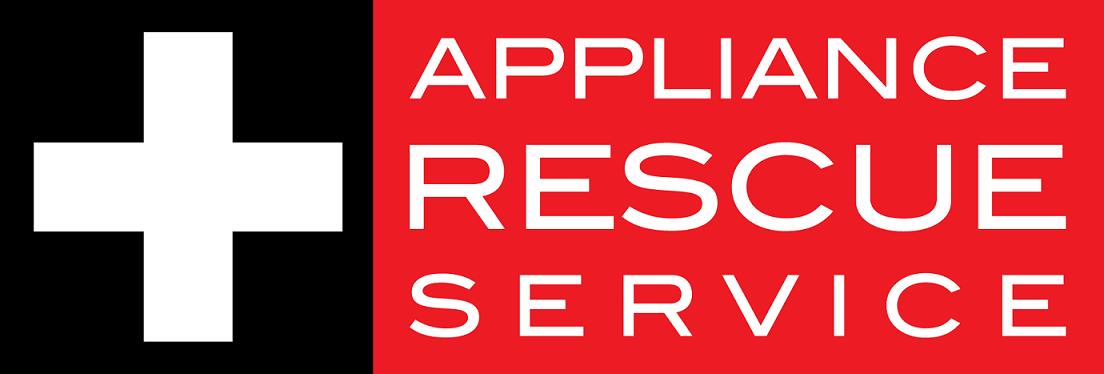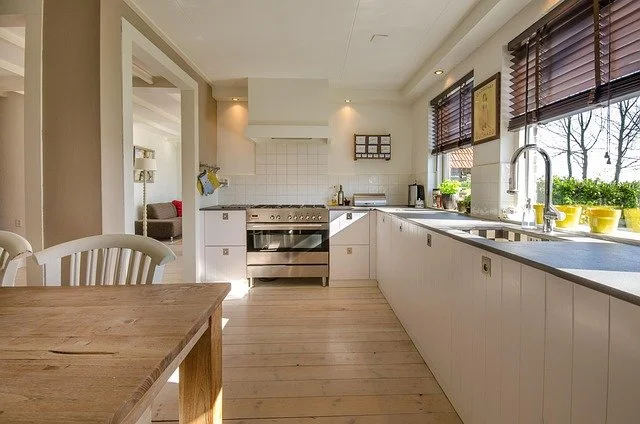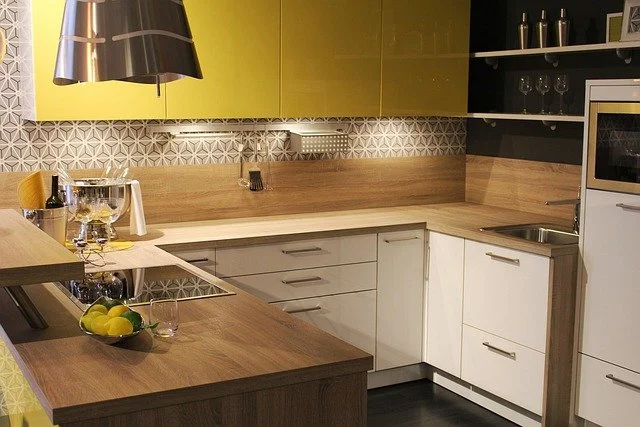Transform your kitchen into an organized, efficient, and stress-free space
For years, homeowners were told to follow the “work triangle” when designing their kitchens: place the refrigerator, stove, and sink in a neat three-point setup, and everything else would fall into place. While that idea made sense in smaller, one-cook kitchens, today’s busy households need something more flexible. Enter the concept of kitchen zones—a modern approach that organizes your kitchen by function instead of rigid geometry.
At its core, zone planning is about grouping related activities and storing the tools for those tasks in the same area. Instead of running across the room every time you need a cutting board or mixing bowl, you set up your space so those items live where you’ll actually use them. The result? A kitchen that feels intuitive, runs more smoothly, and supports how you really cook, clean, and gather. Even better, zones can be customized to suit your lifestyle—whether that means a dedicated baking station, a coffee corner, or a family drop zone for backpacks and mail.
Here’s how to put the concept into practice in your own home.
From Triangles to Zones
The old “work triangle” rule still has its place in some smaller kitchens, where the distance between fridge, stove, and sink needs to be kept tight. Ideally, each side of the triangle should be 4 to 9 feet, with a total perimeter of 13 to 26 feet. But for larger kitchens—or households where more than one person is cooking—this setup falls short. That’s where zones come in.
Instead of focusing on appliances, the zone method maps your kitchen by function. Ideally, you'll have five functiona areas, storage, prep, cooking, cleaning and serving. Think of it like a workflow chart for your kitchen, keeping everything in arm's reach.
The Five Core Kitchen Zones
While every kitchen is unique, most will benefit from these five essential areas:
1. Food Storage
This zone covers the refrigerator, freezer, and pantry—the heart of your ingredients. Place your fridge and pantry close together so you don’t have to zig-zag when unloading groceries or pulling out dinner supplies. Clear bins or labeled containers make it easier to keep track of what you have on hand (and avoid the dreaded three-bottle collection of soy sauce). Store everyday items at eye level and save the high or low shelves for things you use less often.
2. Dishes & Utensils
Plates, glasses, mixing bowls, and cookware belong here. Everyday dishes are easiest to store near the sink or dishwasher so unloading becomes a one-step job. Pots and pans living close to the stove makes the most sense. A great option here is deep drawers, and if not that, pull-out drawers so you don't have to wrestle with lids. Lazy Susans, partitions and drawer dividers can all help to corral everything.
3. Cleaning & Waste
Your kitchen needs a central spot for washing up and disposing of waste. This is the sink, dishwasher, recycling bins and garbage. If possible, tucking a trash pull-out near the prep zone so scraps can go straight into the trash. Cleaning supplies can go into a cabinet or under the sink, making it easy to clean up at the end of the night. Try to leave at least two feet of counter space on one side of the sink for stacking dirty dishes, with another 18 inches on the other side for drying or staging.
4. Preparation
This is where the magic happens—chopping, mixing, seasoning, and assembling. Ideally, your prep zone sits between the sink and the stove, so rinsed produce can move easily into the cutting area, then on to the pan. Stock this zone with knives, cutting boards, mixing bowls, and frequently used utensils. Good task lighting here makes all the difference—nobody wants to dice onions in the shadows.
5. Cooking
The stove, oven, microwave, and their surrounding surfaces make up this zone. To keep things running smoothly, keep oils, spices, pots, and utensils within arm’s reach. Leave at least a foot of counter space on either side of the stove for landing spots—places to set down hot pans or transfer food safely. And don’t forget proper ventilation: a good range hood improves air quality and keeps lingering smells at bay.
Optional Zones for Real Life
Once you have the basics down, you can layer in extras that suit your household:
Baking Zone: Store your stand mixer, rolling pins, and baking sheets together near the oven or pantry.
Coffee or Bar Zone: Create a mini café with your coffee maker, mugs, and supplies—or a bar area with glassware and mixers.
Drop Zone: A countertop or cabinet for keys, mail, laptops, or kids’ homework—because the kitchen inevitably doubles as the family hub.
Serving Zone: Keep platters, serving utensils, and glassware near the dining area for quick table setting.
Lunch Prep Zone: Corral reusable containers, sandwich bags, and water bottles to make mornings easier.
Specialty Storage: Seasonal platters, cake stands, and holiday dishware can live in upper cabinets or even outside the kitchen until needed.
Smart Layout Considerations
Even the best zones fall flat if the layout doesn’t support them. A few tips:
Place the refrigerator near an entrance so unloading groceries is less of a marathon.
Keep the sink relatively central, with the stove and fridge nearby.
Always allow counter “landing space” next to big appliances—12 to 24 inches is ideal.
In small kitchens, combine zones (prep and cleanup, for instance). In large kitchens, consider extras like a double island or a second prep sink.
Use vertical space—tall cabinets, wall hooks, or pot racks free up counters without sacrificing storage.
A well-zoned kitchen doesn’t just look organized—it feels better to use. Grouping items by task keeps you from running laps around the room, while clear landing spots make cooking and cleanup faster and safer. And because zones can be customized, they’ll work in any size kitchen, whether you’re living in a city apartment or a sprawling family home.
Think of it this way: the old work triangle gave you a map; zones give you a system that adapts to how you actually live.
If you’re planning a kitchen refresh, organizing into zones is one of the simplest ways to make your space work harder for you. And if your appliances aren’t keeping up with your new system—whether it’s a fridge that’s running warm or a dishwasher that can’t keep up—our team at Appliance Rescue Service is here to help. From repairs to expert advice, we’ll make sure your kitchen runs as smoothly as it looks.
Call: (214) 599-0055
Additional Reading
Unlocking Home Harmony: The Role and Benefits of Professional Organizers
Kitchen Safety 101: Protecting Your Little Ones at Home
Places to Avoid: The Paw Version!


